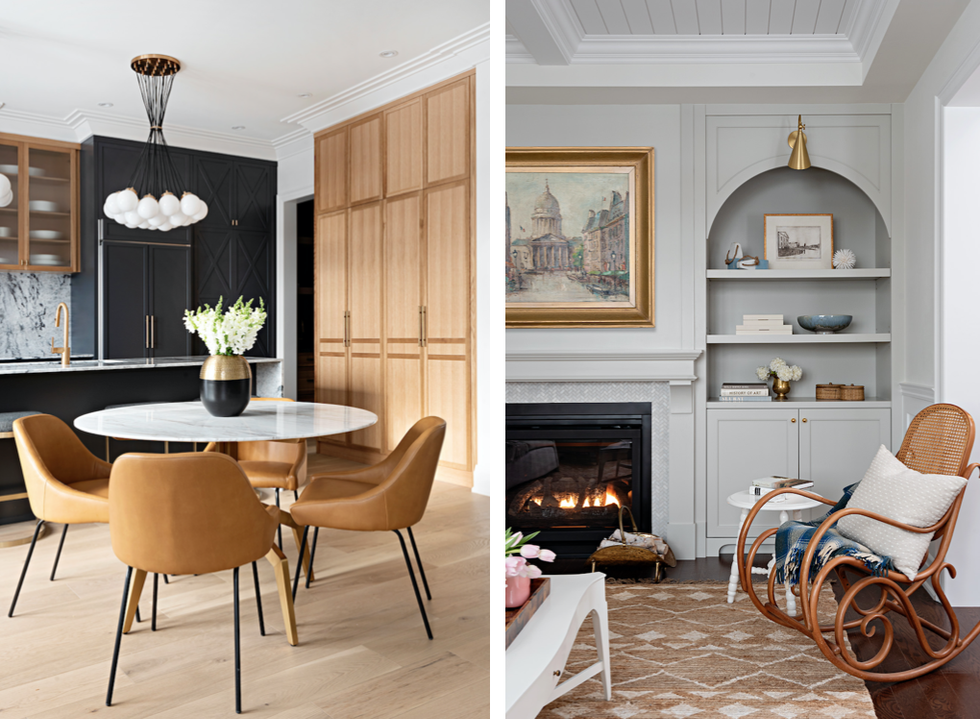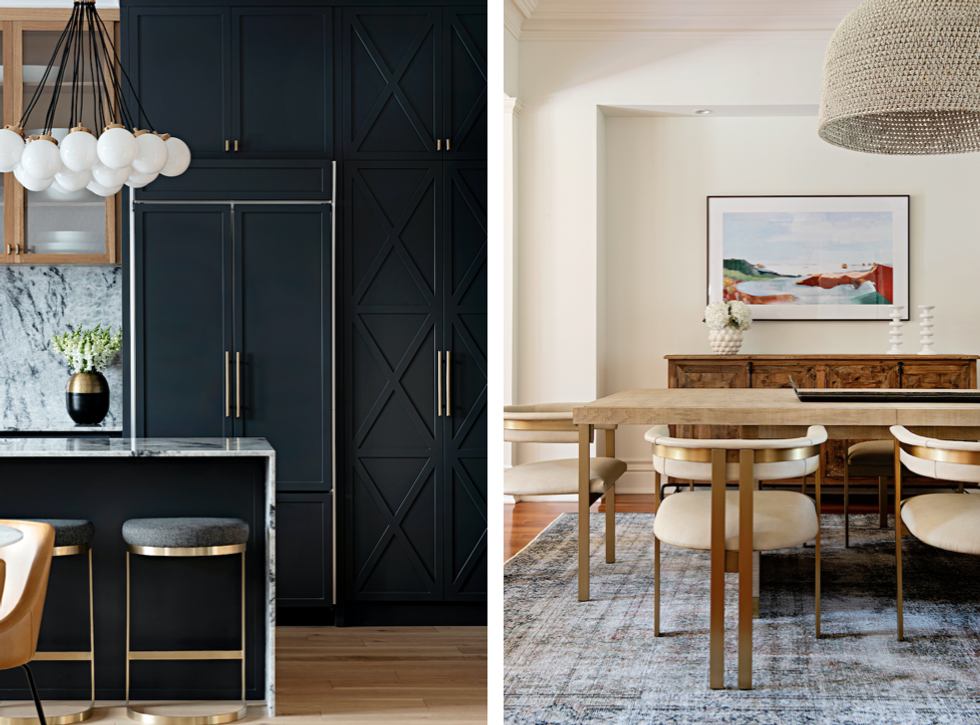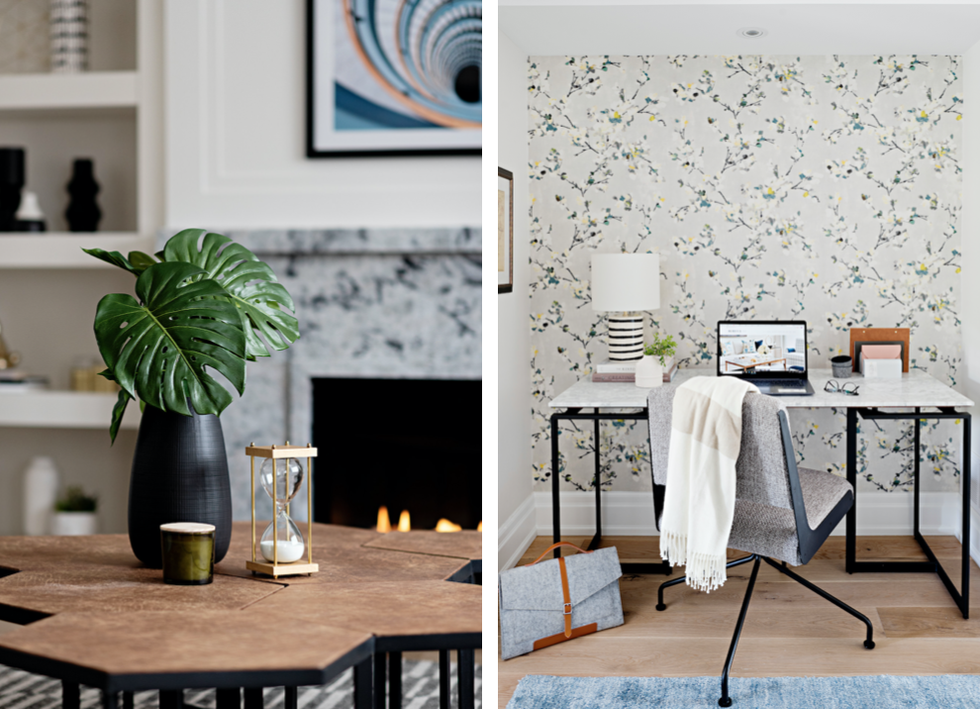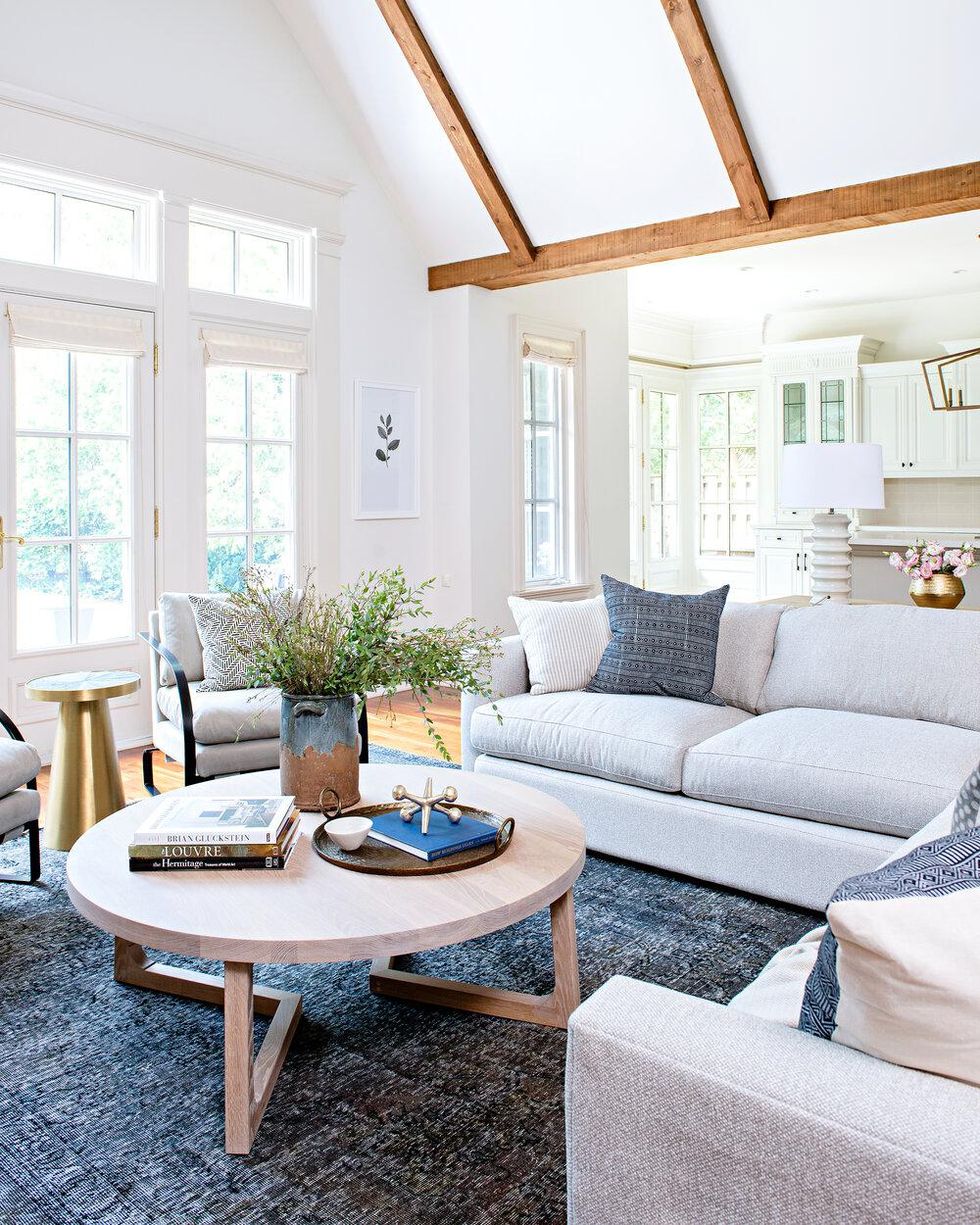
If you're passionate about home decor, you know it can be an expensive hobby, and also not easy on the planet (the shipping alone!). But getting creative at home doesn't mean you have to shell out a ton of money or even buy new. Sure, there's the occasional splurge for something you really adore, but keeping your home new and fresh can be even more satisfying when you DIY. If you're moving into a new spot or just looking to revamp your space, we've got sustainable tips from interior designer Rebecca Hay, of Toronto-based Rebecca Hay Designs Inc., that are healthy for your home, budget, and carbon footprint.

Reduce, Reuse, Recycle
"This might be my favorite topic when it comes to sustainable design," says Hay. "I absolutely love taking pre-loved existing pieces in a home and repurposing them. It adds character and personality and can be completely unique and one-of-a-kind. The added bonus: You're not creating an additional carbon footprint."
Hay suggests looking at what you have in your house that you could possibly breathe new life into, or perhaps searching online and neighborhood thrift stores for previously loved pieces that have more character.
"Sometimes just moving a piece of furniture from one wall to the next can just change and open up the space and make it feel new again," says Hay.
Pro tip: It's all in the accessories! Look for items that speak to you to create a more curated look. Thrift shops are a great place to hunt for very inexpensive items or invest in high quality items from a beautiful store. Less is more when it comes to accessories!

A Coat Of Paint Goes A Long Way
Paint is an easy way to upgrade a space without shelling out a lot of money. To keep it sustainable, look for eco-friendly, non-toxic paints and focus on an accent wall or mural to go easy on the budget.
"Traditional paints that contain plastic create a plastic barrier on walls when applied that traps air and leads to mold and other problems," says Hay.
Find the color that's right for you and search Instagram, Pinterest, and our own archive for wall art ideas.
Pro tip: Paints that are labelled as 'water-based' might just mean they're watered down, but still harmful to the environment. Ingredients like vinyl resins, synthetic dyes, petrochemicals derived from oil, acrylics, formaldehyde, and ammonia can contribute to a variety of health issues. If you've got any doubt, look at the ingredients list.
Add Sustainable Finishing Touches
"I am not a fan of grabbing a bunch of inexpensive products at big box stores," says Hay. "They are often poorly made and end up in a landfill sooner than any of us would like to admit."
Instead, try to focus on quality vs. quantity. A lot of pre-loved items are of better quality than contemporary pieces.
"Quite often you can find great quality pieces of furniture that are a fraction of the price than new. They're immediately accessible and you don't have to wait 24 weeks for a shipping container," add Hay.
Incorporating natural elements and designing with plants are also a great way to refresh a space without breaking the bank. They never go out of style.

Keep It Timeless
"I'm not a big fan of uber-trendy design," says Hay. "I would just use trends in small doses, like wallpaper in the powder room, which is something you could change every few years because it's fun and makes a statement. Or add a pillow, maybe some draperies, things that are simple and easy to swap out."
Follow us on Pinterest for more home decor ideas. Take or gift our interior design class too!
0 Commentaires